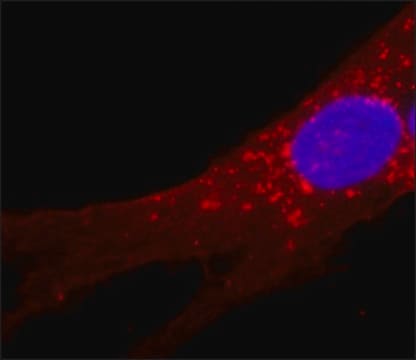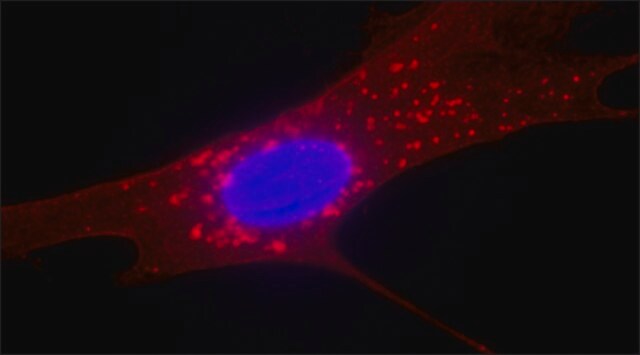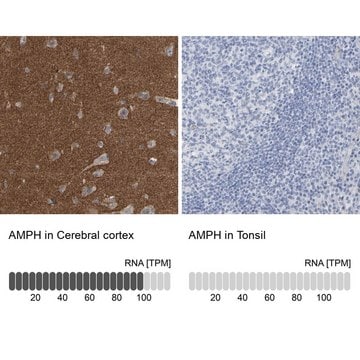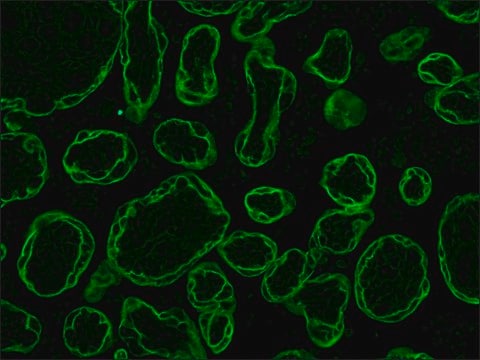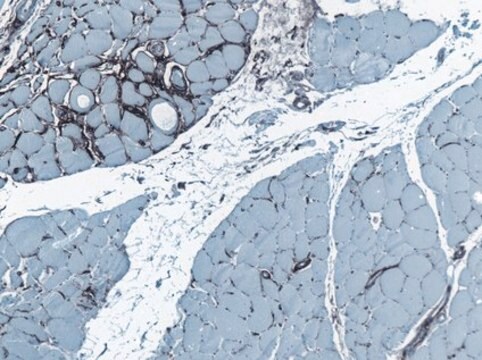F4772
Monoklonalnypeptyd antycytokeratynowy18-FITC
clone CY-90, purified immunoglobulin, buffered aqueous solution
Synonim(y):
Monoclonal Anti-Cytokeratin Peptide 18
Wybierz wielkość
1800,00 zł
Wybierz wielkość
About This Item
1800,00 zł
Polecane produkty
pochodzenie biologiczne
mouse
białko sprzężone
FITC conjugate
forma przeciwciała
purified immunoglobulin
rodzaj przeciwciała
primary antibodies
klon
CY-90, monoclonal
Formularz
buffered aqueous solution
reaktywność gatunkowa
wide range
metody
direct immunofluorescence: 1:100 using formalin-fixed, paraffin-embedded sections of human or animal tissues
immunohistochemistry (formalin-fixed, paraffin-embedded sections): suitable
izotyp
IgG1
Warunki transportu
dry ice
temp. przechowywania
−20°C
docelowa modyfikacja potranslacyjna
unmodified
informacje o genach
human ... KRT18(3875) , KRT18(3875)
Szukasz podobnych produktów? Odwiedź Przewodnik dotyczący porównywania produktów
Opis ogólny
Immunogen
Zastosowanie
- bezpośrednim barwieniu immunofluorescencyjnym
- immunohistochemii
- podwójnej immunofluorescencji
- immunocytochemicznej i immunoelektronowej lokalizacji keratyn
- nadaje się do immunohistochemii w celu identyfikacji komórek nabłonka kanalików nerkowych w regeneracji komórek pozanerkowych podczas ostrej niewydolności nerek
- nadaje się do immunocytochemicznej i immunoelektronowej lokalizacji keratyn w ludzkiej strefie interakcji matczyno-płodowej
- może być stosowany w procedurach pojedynczego lub podwójnego znakowania
Działania biochem./fizjol.
Postać fizyczna
Oświadczenie o zrzeczeniu się odpowiedzialności

Nie możesz znaleźć właściwego produktu?
Wypróbuj nasz Narzędzie selektora produktów.
Kod klasy składowania
10 - Combustible liquids
Temperatura zapłonu (°F)
Not applicable
Temperatura zapłonu (°C)
Not applicable
Wybierz jedną z najnowszych wersji:
Certyfikaty analizy (CoA)
Nie widzisz odpowiedniej wersji?
Jeśli potrzebujesz konkretnej wersji, możesz wyszukać konkretny certyfikat według numeru partii lub serii.
Masz już ten produkt?
Dokumenty związane z niedawno zakupionymi produktami zostały zamieszczone w Bibliotece dokumentów.
Active Filters
Nasz zespół naukowców ma doświadczenie we wszystkich obszarach badań, w tym w naukach przyrodniczych, materiałoznawstwie, syntezie chemicznej, chromatografii, analityce i wielu innych dziedzinach.
Skontaktuj się z zespołem ds. pomocy technicznej
